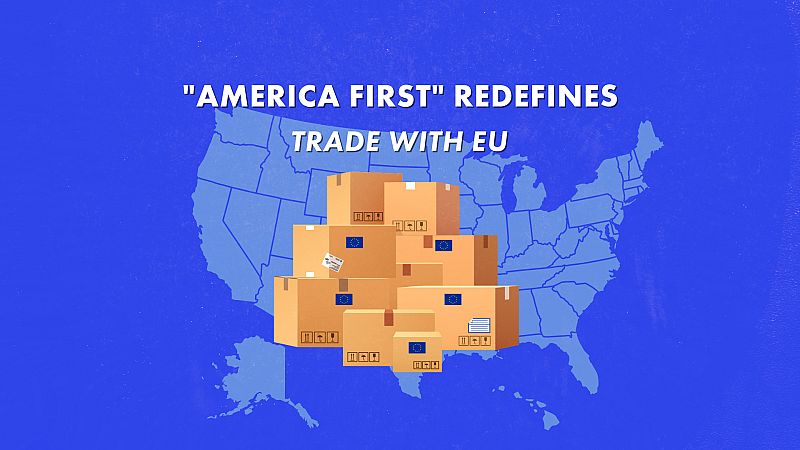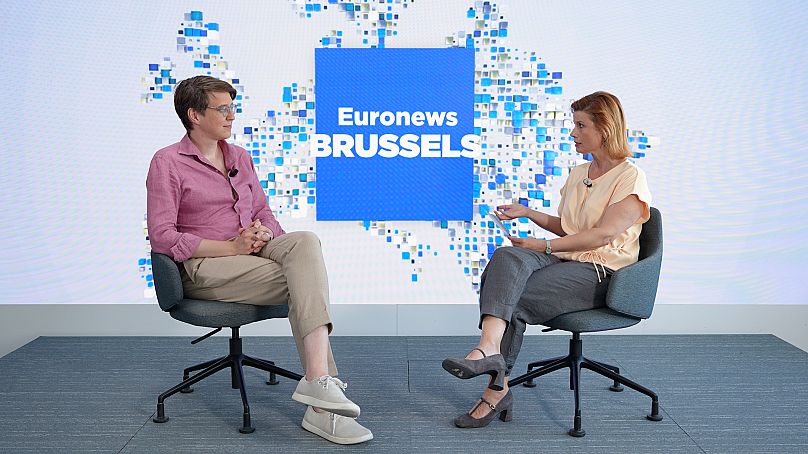Can the EU economy withstand the trade deal with the US?

In 2024, The US imported 606 billions' dollars' worth of goods from the EU and exported around $370 billions (318,7 billion euros)' worth. To reverse the deficit, the US will now apply a 15% tariff to approximately 70% of the goods it receives from the EU, under the deal struck on 27 July after a meeting between the European Commission (that negotiates in the name of the block) and the US administration.
However, the rate negotiated for the EU is higher than that obtained by another important trading partner of the US and EU: the United Kingdom.
"The European Commission claims 15% is a good deal, because the UK 10% tariff is not an all-inclusive rate, which means it doesn't incorporate the existing US import tariffs applied to the UK," said Amandine Hess, who's been covering the story for Euronews.
The two parties agreed that tariffs will not apply to certain sectors that are strategic for both blocs, such as aircraft and their components, certain pharmaceuticals, natural resources, and critical raw materials, among others.
The EU's auto industry is one of very few sectors viewing the deal positively, since it will pay 15% instead of the 27.5% imposed at the beginning of Trump's term. By contrast, steel and aluminium will continue to be levied at 50%.
The European Commission will continue negotiating with the United States in order to obtain more tariffs exemptions on certain products and quotas for others.
Nonetheless, several EU governments considered the deal a disappointment - and even "submission", in the words of the French prime minister.
What about the EU's deficit in trade in services?
The bloc could still impose rebalancing countermeasures or use its powerful anti-coercion instrument which can be used to ban US companies from accessing EU's public procurement.
Although the EU has a surplus relative to the US in goods, it faces a deficit in services, especially in the digital sector and the crucial development of Artificial Intelligence.
"All the digital services that we use in the EU are American services. And there was this idea of targeting them specifically with the anti-coercion instrument," said Niclas Poitiers, research fellow at Bruegel think tank, based in Brussels.
"The real question is how can you build a digital single market that would allow European companies to scale to the same extent that Google and Apple did in the past and then compete with these companies in the global stage rather than just importing these quick-scaled services from the United States," Poitiers added.
US President Donald Trump has also demanded commitments from the EU that may be difficult to fulfil.
"The European Commission promised that European companies will invest at least $600 billion (516,9 billion euros) in the US by 2029, and pledged to purchase $750 billion (646,1 billion euros) worth of US LNG, oil and nuclear energy products. Donald Trump claims the EU will also purchase American weapons, but all these decisions will be made by the EU's governments and the private companies, not by Brussels," Amandine Hess noted.
The EU-US trade deal still requires approval from the EU 27 member states, which might also prove tricky.
Watch the video here!
Journalist: Isabel Marques da Silva
Content production: Pilar Montero López
Video production: Zacharia Vigneron
Graphism: Loredana Dumitru
Editorial coordination: Ana Lázaro Bosch and Jeremy Fleming-Jones
Today



